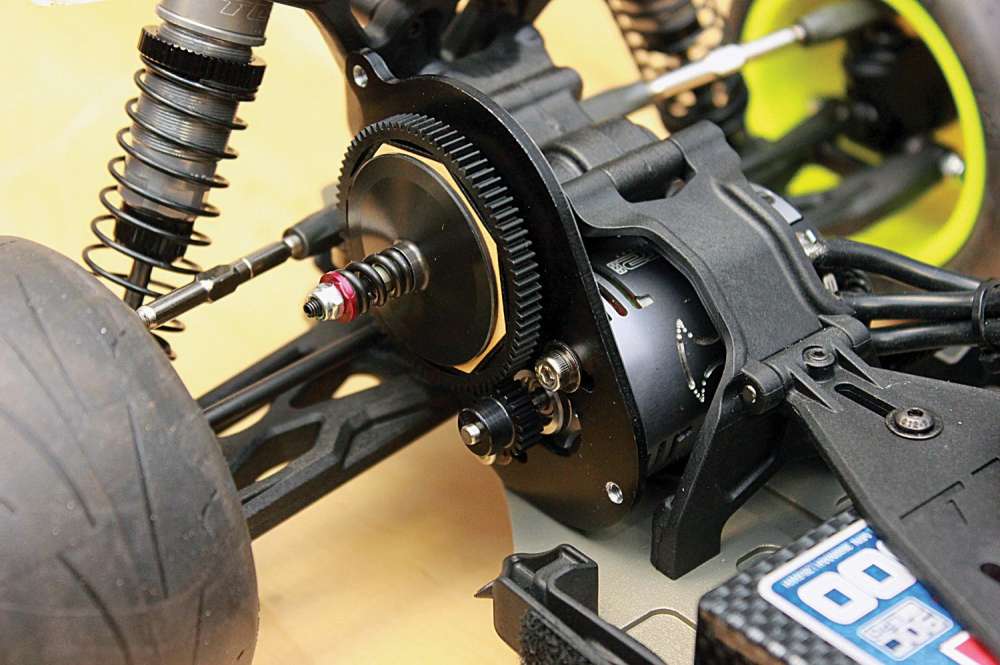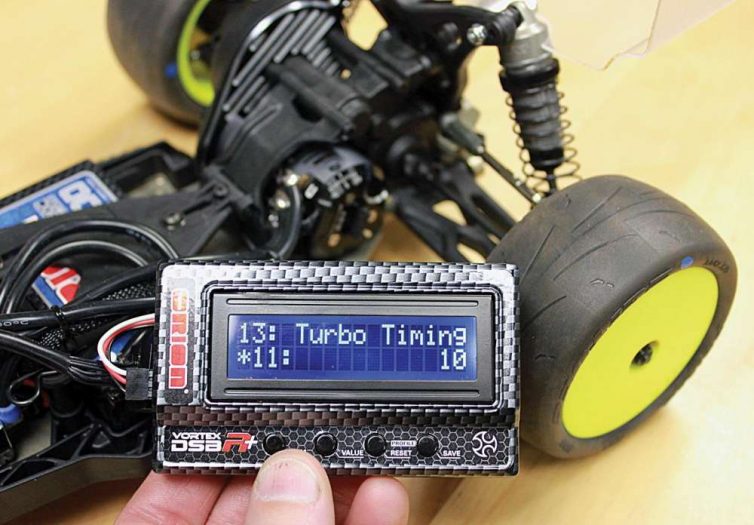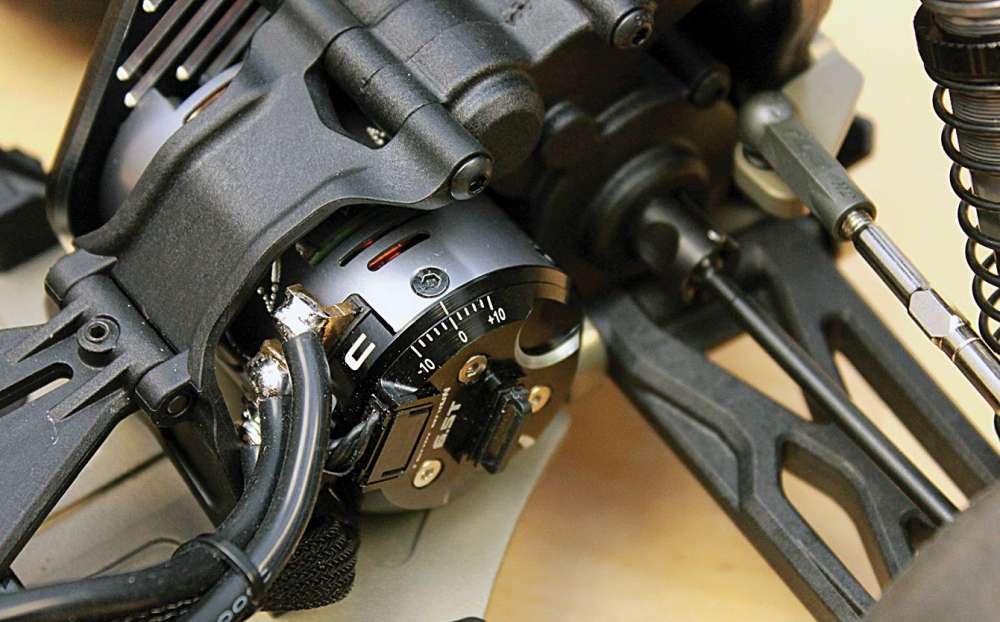In this how to, we will look at something most electric racers have been forced to become familiar with, timing and gearing. Gearing and timing changes can mean a few things depending on what exactly you hope to get out of your racing machine. In true Charlie fashion, I’ll break down these two tuning adjustments to make your educational experience simple.
GEARING
Simple gearing changes to the pinion gear, spur gear changes, and with some vehicles, ring and pinion gear changes all affect the speed, acceleration/punch, run times and temps. Larger pinion gears or smaller spur gears do the same basic thing, but at different levels. One pinion tooth gear increase is close to a decrease of four spur gear teeth. Pinion gear changes are most common, but for some applications, the spur gear needs to also be changed to get the vehicle to the correct gearing ranges. This is common in Spec Class racing, when high turn low Kv motors are used, and gear ratios are chased to find maximum performance. Get Optional Gears: CLICK HERE
 Gearing is basically the ratio of the Spur and the Pinion. To get the final drive ratio to the wheels, you also multiply the vehicle’s gear reduction from the transmission or drivetrain. Vehicles with a ring and pinion in the axle and a transmission, have two reductions to take into account for overall final drive. Tire size also plays into this. Larger tires are like a larger pinion. Comparing vehicles with similar tire sizes is the common trend, but this comparison is often overlooked. Minor tire size changes can equate to big changes to the loads on the vehicle. Perhaps this is a bit more complicated than it needs to be for most applications. Most of us just need to know how to adjust our own rig, and what these adjustments should do. Gearing changes are mainly done to make a vehicle faster, or on the scale/crawling side, crawl better. A bigger pinion or smaller spur gear makes the vehicle have more top speed, at a decrease in acceleration. It’s most likely that gearing up will make everything run a bit hotter, and shorten run times. A smaller pinion or larger spur gear has the opposite effect. The vehicle’s top speed slows down, but you get better low speed grunt and response.
Gearing is basically the ratio of the Spur and the Pinion. To get the final drive ratio to the wheels, you also multiply the vehicle’s gear reduction from the transmission or drivetrain. Vehicles with a ring and pinion in the axle and a transmission, have two reductions to take into account for overall final drive. Tire size also plays into this. Larger tires are like a larger pinion. Comparing vehicles with similar tire sizes is the common trend, but this comparison is often overlooked. Minor tire size changes can equate to big changes to the loads on the vehicle. Perhaps this is a bit more complicated than it needs to be for most applications. Most of us just need to know how to adjust our own rig, and what these adjustments should do. Gearing changes are mainly done to make a vehicle faster, or on the scale/crawling side, crawl better. A bigger pinion or smaller spur gear makes the vehicle have more top speed, at a decrease in acceleration. It’s most likely that gearing up will make everything run a bit hotter, and shorten run times. A smaller pinion or larger spur gear has the opposite effect. The vehicle’s top speed slows down, but you get better low speed grunt and response.
These changes are relative. Sometimes, a gearing change will “only” make it go faster, and have no noticeable effect on temperature or run-time. Sometimes, even drastic changes will go unnoticed depending on the motor. In the spec racing world, gear ratios are very high to get the most out of the motor, for the time of the race, and temperature ceiling of the motor.
Gearing up usually means a smaller drive ratio. As you increase the pinion, you are gearing up, as you lower the spur gear size, you are also gearing up; however, the value of the gear ratio, actually gets smaller.
TIMING
Timing is another major topic that is an important factor in the gearing. Having the right gearing with the wrong motor timing or vice versa can lead to damage fairly quickly. Motor timing can come two ways from the speed control or mechanically from the end-bell adjustments. In the racing world, some classes do not allow any ESC timing. Racers push the limits of the motor’s mechanical timing to get more RPM from the motor. Increasing the motor’s end- bell timing will give the motor higher RPM at the cost of temperature. Timing up can make motors faster and much hotter in a hurry.
 The speed controls of today’s brushless arena that have electronic timing features can use motor firing changes to electronically advance the timing of the motor. This allows the ESC to change when and how the timing gets applied. This ramp up of the timing allows unique delivery of the power and has unlocked incredible speeds. Used correctly, speed control timing can make a vehicle a lot faster with very minor changes otherwise. Understanding how your ESC timing works and how to do basic testing is important. So take some time to read that pesky manual. When the timing kicks in, how much timing kicks in, and in some cases how that timing kicks in can be adjusted. Many of the high end racing speed controls offer very advanced timing adjustments with levels of timing at various stages in the rpm or throttle range.
The speed controls of today’s brushless arena that have electronic timing features can use motor firing changes to electronically advance the timing of the motor. This allows the ESC to change when and how the timing gets applied. This ramp up of the timing allows unique delivery of the power and has unlocked incredible speeds. Used correctly, speed control timing can make a vehicle a lot faster with very minor changes otherwise. Understanding how your ESC timing works and how to do basic testing is important. So take some time to read that pesky manual. When the timing kicks in, how much timing kicks in, and in some cases how that timing kicks in can be adjusted. Many of the high end racing speed controls offer very advanced timing adjustments with levels of timing at various stages in the rpm or throttle range.
Optional RC Electronics: CLICK HERE
WRAP-UP
Like gearing or mechanical motor timing, speed control electronic timing can cause severe damage when used incorrectly. Be prepared for basic testing and check the temperature of your electronics during any gearing, timing, or speed control adjustments.
By Charlie Suangka
 RC Driver The Best In RC Car & Truck News, Reviews & Video
RC Driver The Best In RC Car & Truck News, Reviews & Video 








